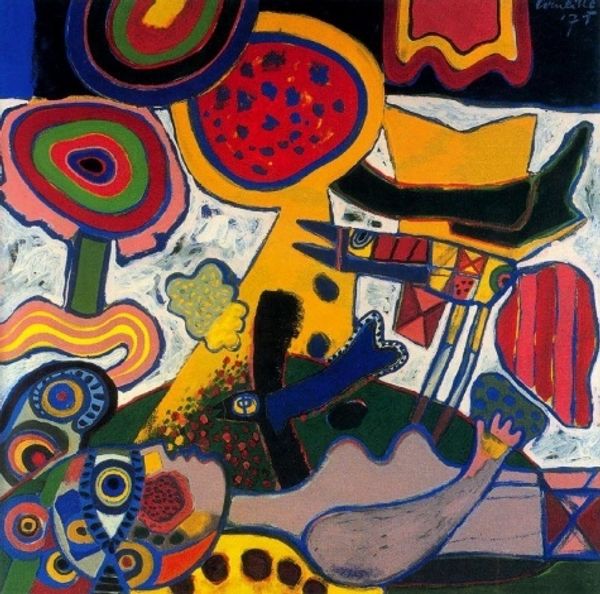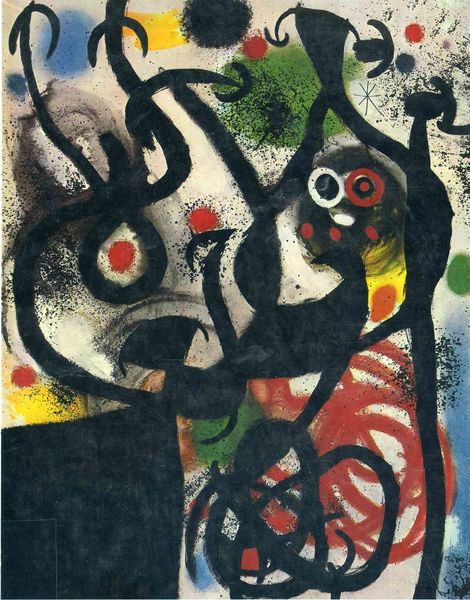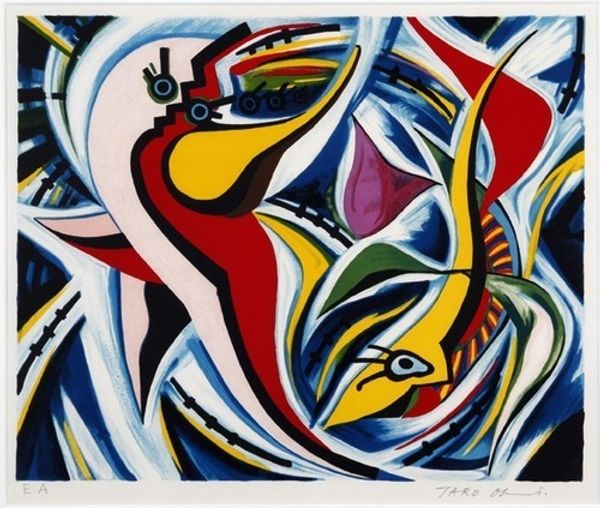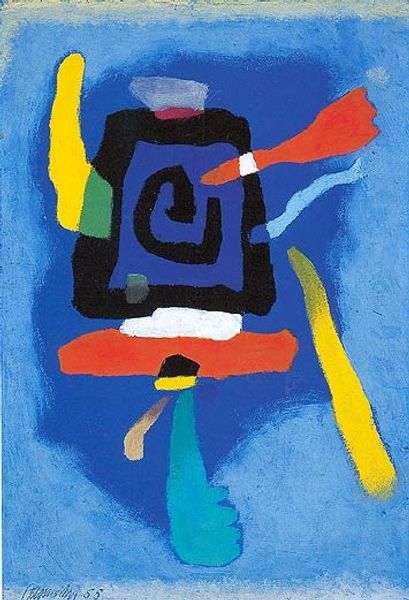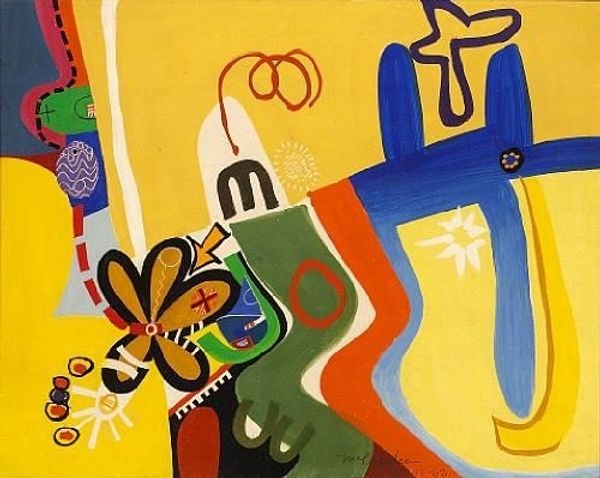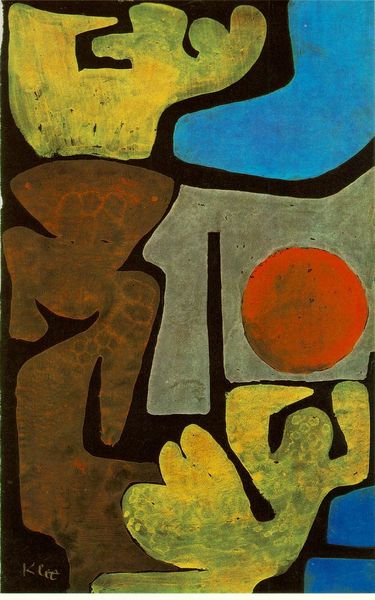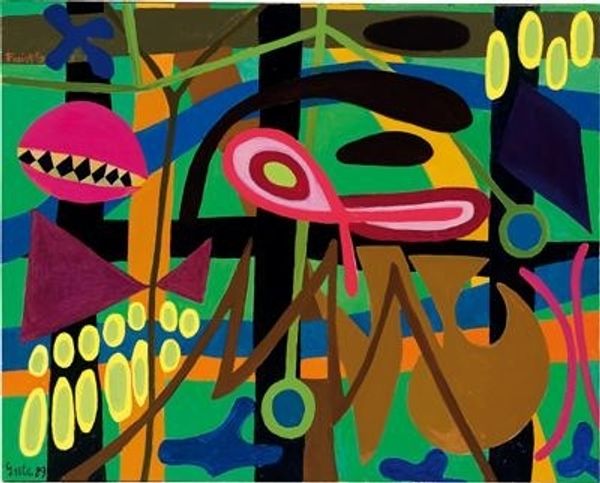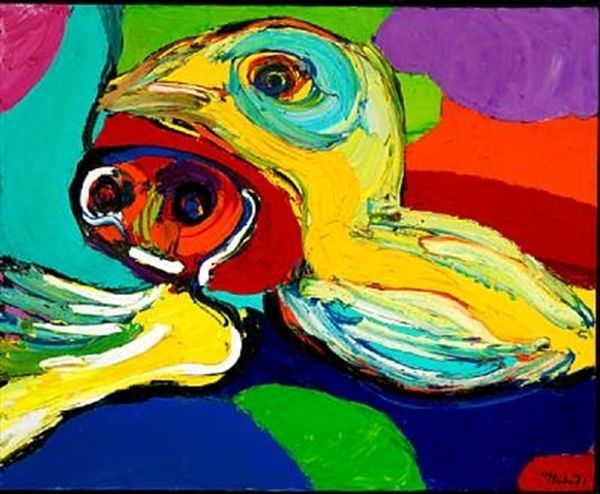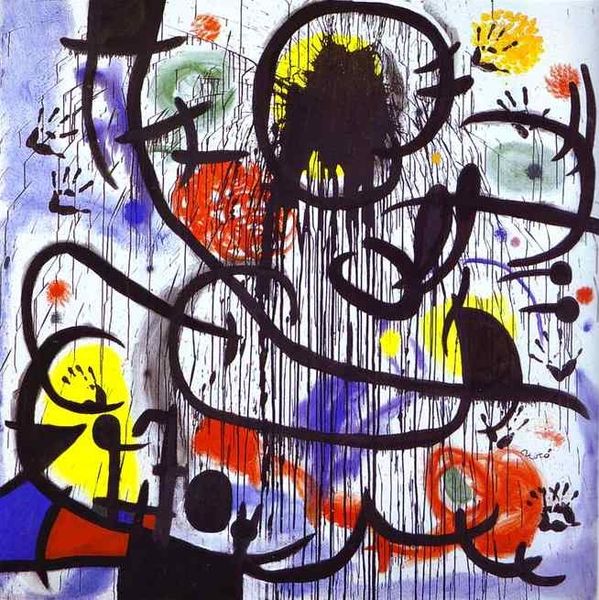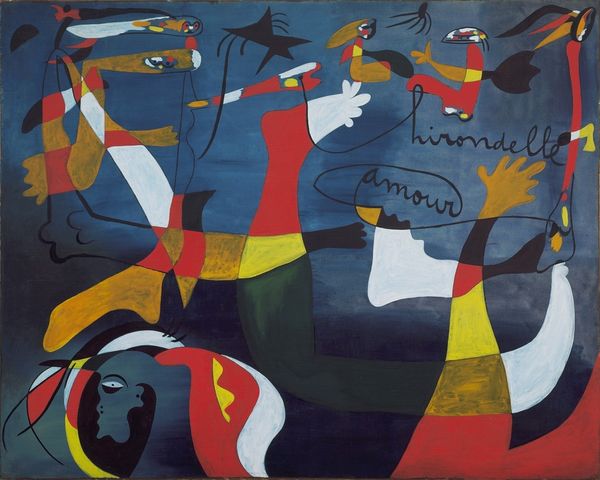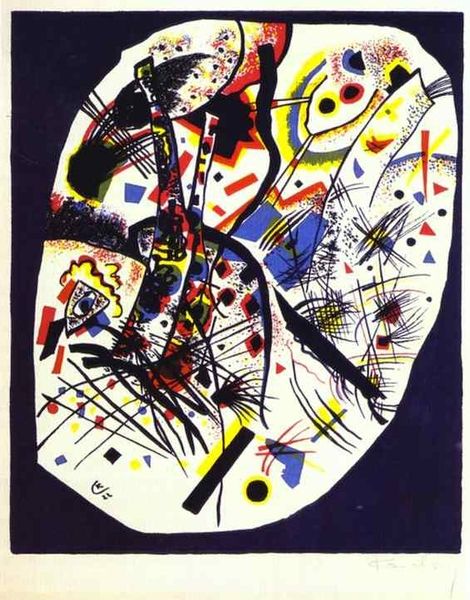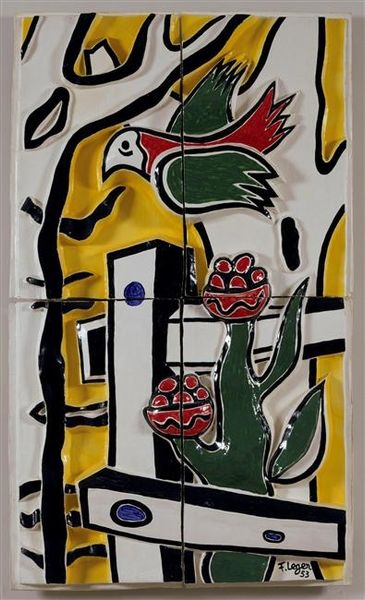
#
cobra
Copyright: Corneille,Fair Use
Editor: This is Corneille’s "She Gives Herself to Summer," a print from 1980. I’m immediately struck by its boldness - the colours are so vibrant, almost jarring. How do you interpret this work? Curator: This piece vibrates with a specifically feminist perspective. Look at how Corneille reclaims the gaze, presenting the female form not as objectified, but as powerful, self-possessed, almost divine in her offering to nature itself. How does this ‘giving’ complicate conventional understandings of the erotic within art history? Editor: That’s an interesting point, I hadn’t considered the idea of ‘giving’ as an active choice. It challenges the passivity often associated with female subjects. But what about the figures? They’re so stylized and abstract, almost cartoonish. Curator: Precisely! And what does this stylization achieve? The simplification of form allows Corneille to circumvent the male gaze's desire to possess the 'real'. Instead, it presents woman as an emblem, a symbolic figure intertwined with the very pulse of summer’s vitality. How can we contextualise it against pop-art movement’s critique of consumerism and the objectification of female figure? Editor: So, by abstracting the figure, Corneille moves away from the objectification often seen in art and positions the woman as an agent of nature, embodying the season's energy rather than simply being a passive representation? I see how this shifts the power dynamic. Curator: Exactly. And consider the period, the 1980s, when conversations about feminist theory, reclaiming the body, were gaining traction. This print contributes to that dialogue, re-imagining the female form as intrinsically linked to elemental power. Editor: It’s fascinating to see how much can be unpacked from this seemingly simple, vibrant image. I now understand Corneille's intention to express feminine empowerment instead of feminine submission in "She Gives Herself to Summer." Thank you. Curator: My pleasure! These visual conversations remind us of the potent intersections between art, gender, and history.
Comments
No comments
Be the first to comment and join the conversation on the ultimate creative platform.
